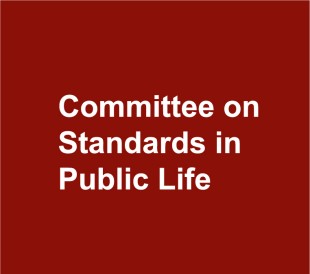Political disengagement has been a growing concern in the UK as well as abroad: evidence suggests that many people feel dissatisfied with the system of governing and that their own involvement in national politics has little impact. In this guest blog, Dr Catherine Bochel suggests that enabling the public to have meaningful engagement with Parliament would be a welcome step towards rebuilding public trust in Parliament and politicians.
Generally speaking, public engagement is about inviting the public’s views, or involving them to some extent in the practices of policy-making bodies. Parliaments are “under particular pressure to develop public engagement strategies”. In the context of the UK Parliament, public engagement refers specifically to activities that aim to engage the public with Parliament’s work and processes.
The UK Parliament has increased its efforts to engage with the public in the last two decades. There are a number of ways in which this happens. Petitions, debates, learning programmes, workshops, tours, parliamentary archives, social media, select committees and public bill committees, are just a few examples.
This wasn’t always so. Until relatively recently, almost all engagement with Parliament was between MPs and their constituents, with little institutional support. This began to change in 1978, when a House of Commons Inquiry Service was set up to answer queries from the public, and the first Education Officer was appointed in 1980. Today, both Houses support public engagement activities, and each has a strategic objective that focuses on public engagement. Significant progress has been made in terms of the variety of forms of engagement Parliament uses and the support available for these.
How Parliament engages with the public is particularly important. The truth is that the vast majority of people who do so are unlikely to immediately get what they ask for (for example, there are often conflicting demands, resources are limited, and investigations by regulators take time), and it is therefore particularly important that when they come into contact with Parliament their understanding of the process is as clear as possible.
I am currently undertaking research which looks at the extent to which Parliament’s engagement with the public is underpinned by a procedural justice framework, essentially a ‘fair process’, to see what can be learned for future initiatives.
The results from the first stage, published in a House of Commons Library Briefing Paper, illustrate that Parliament’s engagement might be viewed in different ways. For example, one dimensional, two-dimensional, led by politicians, led by officials, top-down or bottom-up. The purposes of engagement are many and varied, perhaps to increase public understanding of how Parliament works, or to gather material for a select committee inquiry. Different parts of the ‘public’ are also targeted for different initiatives.
Good processes are likely to be circular in nature. There will be a number of pre-engagement stages in which Parliament sets out why it wishes to engage with the public and identifies appropriate mechanisms to achieve its aims. The public need to understand what they gain from engaging. The processes for this should be transparent, consistent and fair. They should include what involvement might consist of, the limits to any influence and the feedback they will receive.
The second stage of my work focuses on the work of select committees, MPs and Peers, and outreach. These all have the potential for two-way engagement. For example, looking at select committees, it is clear that that they try to engage with the public in a wide variety of often innovative ways to elicit evidence for their inquiries. Visits outside Westminster, Easy Read calls for evidence, working with partner organisations, seeking views on future programmes of work via written submissions and videos tweeted to a committee hashtag, are just a few examples. This reflects work commissioned and published by the Liaison Committee (2015). The different methods used can be aimed at reaching both online and offline audiences, different groups, provide some opportunities for more in-depth engagement, and make the process open and accessible. There are clearly examples of good practice going on.
However, what happens to evidence once it has been collected is also important. It is generally possible to see where formal written and oral evidence has fed into an inquiry, to what extent it has been listened to, and whether it has helped to contribute to recommendations in a report. The processes for recognising informal evidence, such as that gathered via social media or site visits, may be less clear. This raises questions such as: how is informal evidence incorporated into committees’ deliberations and into the final report? Notes taken at informal sessions may guide committees’ decisions. The clerks read the evidence and put it before the committee. It may contribute to committees’ thinking in forming their recommendations. But the processes by which this happens appear to be more ad hoc and are not necessarily transparent. It is important that those who have contributed informal evidence can see to what extent it has been incorporated into committees’ deliberations and into the final report and understand the reasons for this.
This focus on procedural justice, in enabling the public to have meaningful engagement with and greater understanding of Parliament, and potentially to enable them to have their voices heard through more substantive two-way forms of engagement, may be one way to build greater public trust in Parliament and politicians.
Dr Catherine Bochel is a Reader in Policy Studies at the University of Lincoln, UK, and a House of Commons Academic Fellow.
